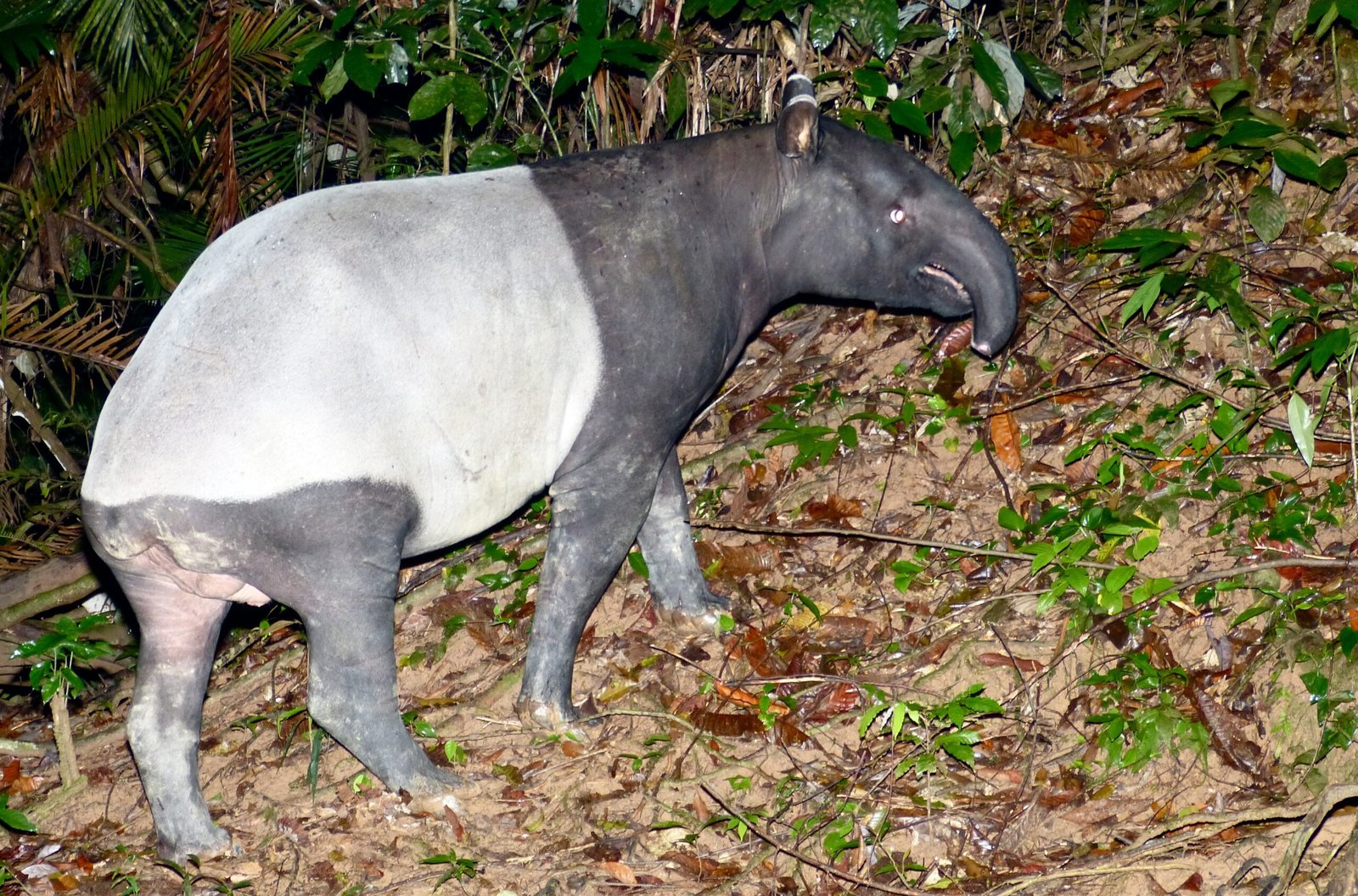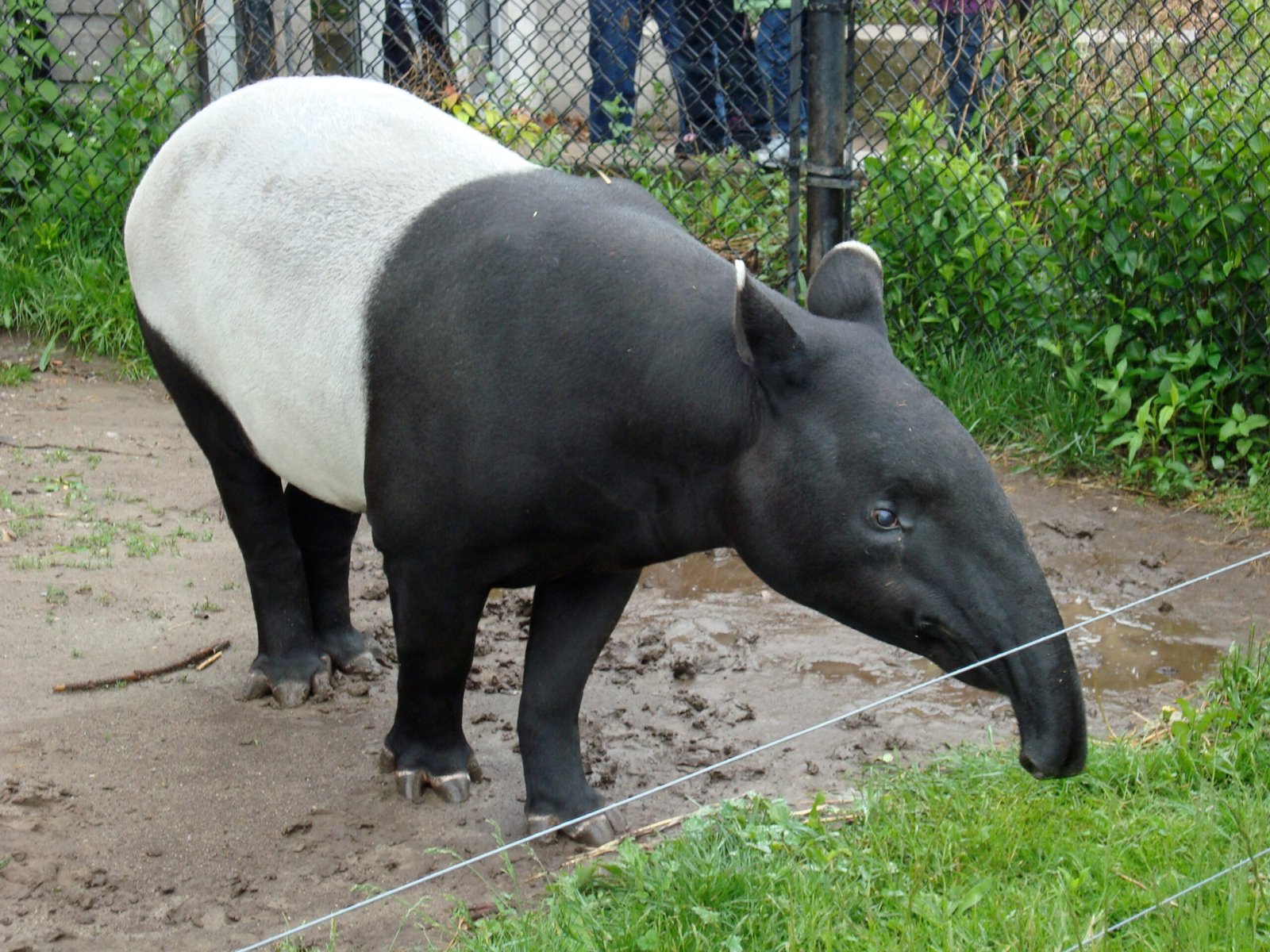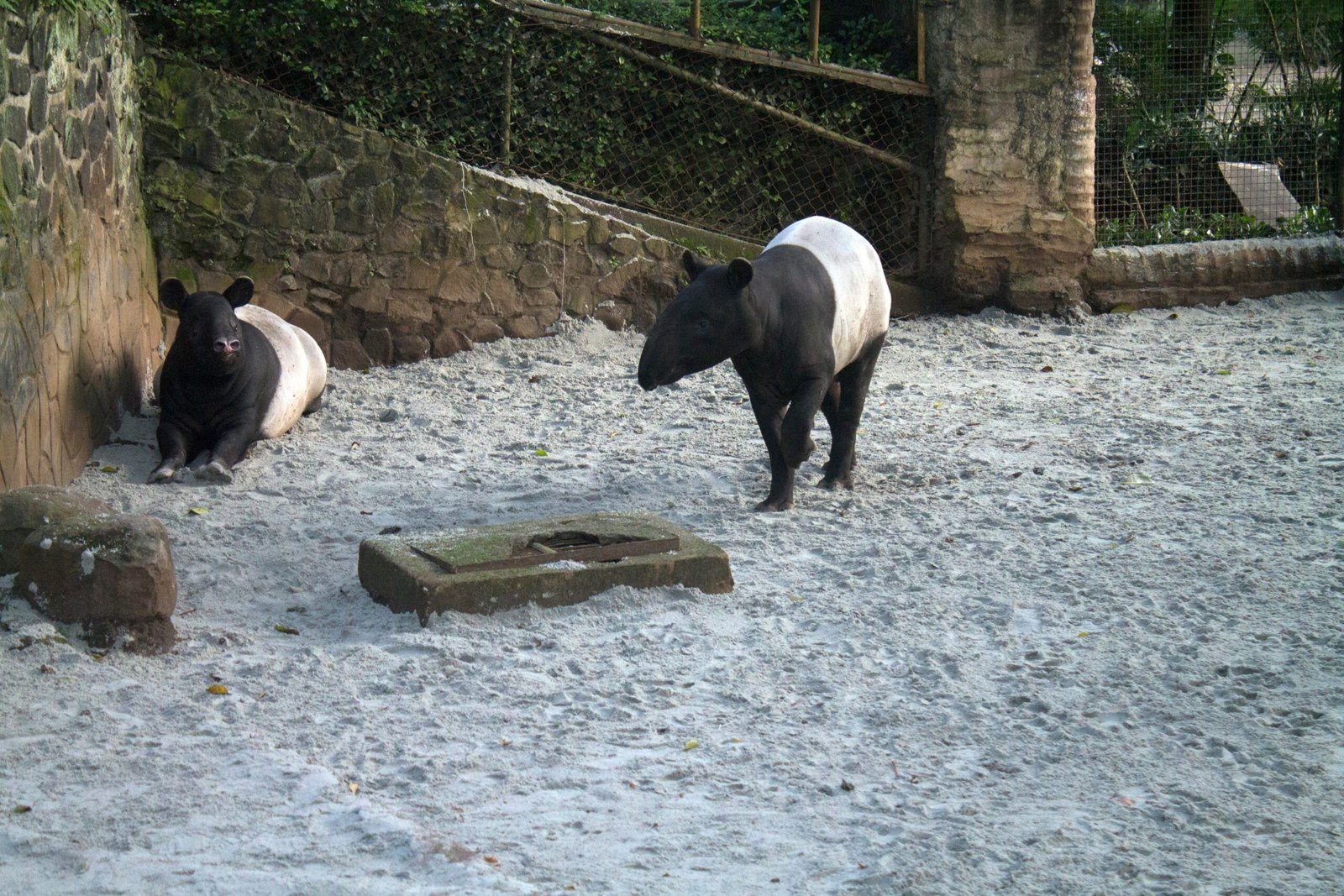Imagine stumbling upon a creature so odd, so enchanting, that it seems to have escaped from the pages of a fairy tale. In the dense, emerald forests of Malaysia, such a being exists: the Malayan tapir. With its peculiar, trunk-like snout and striking black-and-white markings, the tapir is a living paradox—a real-life unicorn, yet so few have seen one in the wild. Yet, despite its magical appearance, this gentle giant faces a very real and urgent threat: extinction. The story of the Malayan tapir is one of wonder, mystery, and a desperate fight for survival.
The Malayan Tapir: A Living Relic

The Malayan tapir is the largest of all tapir species and the only one found in Asia. It stands out with its distinct coloration—its body divided like a yin-yang symbol, half midnight black, half snowy white. This pattern serves as camouflage, breaking up the animal’s outline in the dappled light of the rainforest. The tapir’s most striking feature, however, is its flexible, prehensile snout, which acts almost like a short elephant trunk. Scientists believe this evolutionary marvel is a throwback to ancient mammals that roamed Earth millions of years ago. The tapir has barely changed since the Ice Age, making it a living fossil—a rare glimpse into the planet’s distant past.
A Master of Disguise in the Rainforest

At first glance, the Malayan tapir’s bold coloring might seem conspicuous. But in the shadowy, tangled undergrowth of Malaysia’s rainforests, this unique “saddle” pattern is a perfect disguise. The dark and light portions of its body help it blend into patches of sunlight and shadow, confusing predators like tigers and leopards. Tapirs are mostly nocturnal, venturing out under the cover of darkness to forage for tender shoots, leaves, and fruit. Despite their size, they move with surprising stealth, almost vanishing into the green labyrinth of their jungle home.
The Ecological Role of Malaysia’s “Snouted Unicorn”

The Malayan tapir plays a vital part in maintaining the health of its ecosystem. As a dedicated browser, it feeds on a wide variety of plants, fruits, and leaves. In doing so, it disperses seeds across the forest floor through its droppings, acting as a gardener for the rainforest. Certain tree species depend on the tapir to spread their seeds far and wide, ensuring the continued growth of the forest. Without the tapir’s daily wanderings, some plants might struggle to reproduce, making this odd creature a hidden cornerstone of Malaysia’s wild places.
Struggles in a Disappearing World

Despite its resilience through the ages, the Malayan tapir is now facing its greatest challenge. Rampant deforestation, fueled by logging and palm oil plantations, is devouring the tapir’s habitat at an alarming rate. Roads slice through the forest, isolating tapir populations and making it difficult for them to find mates or food. These majestic animals are also frequently hit by vehicles as they attempt to cross highways that were once forest trails. Each year, their numbers dwindle, pushing them closer to the brink of extinction.
Hunted by Shadows: The Threat of Poaching
Although not as heavily targeted as other wildlife, the Malayan tapir is not safe from the threat of poaching. In some regions, tapirs are hunted for their meat or mistakenly killed due to confusion with wild boars, which are often considered pests. Their unique appearance, once an advantage in the wild, now makes them easy targets for hunters. With fewer individuals left in the wild, every loss is a heavy blow to the species’ survival, tipping the balance ever closer to disaster.
The Tapir’s Secret Social Life
Tapirs are solitary by nature, preferring the quiet company of the forest to the bustle of a herd. They communicate using a series of high-pitched whistles and squeaks, sounds that echo through the undergrowth but rarely reach human ears. During the brief mating season, males and females come together, their courtship dances as mysterious as the rainforest itself. Mothers are fiercely protective, raising their young—adorable, striped calves that resemble watermelons—alone until they are ready to face the world. This solitary lifestyle makes tapirs even more vulnerable, as finding a mate becomes increasingly difficult in fragmented habitats.
Science and Conservation: Hope on the Horizon

Conservationists and scientists are racing against time to save the Malayan tapir. Efforts include tracking tapir movements with radio collars to better understand their needs and territories. Wildlife corridors—safe passages over or under highways—are being built to reconnect isolated populations. Local communities are being educated on the importance of tapirs, and anti-poaching patrols now protect key habitats. Captive breeding programs in zoos offer a glimmer of hope, but experts agree that saving the tapir’s wild home is the key to its survival.
Why the Tapir Matters to Malaysia and the World

For many Malaysians, the tapir is a symbol of their country’s rich natural heritage. Its image appears in local folklore and even on environmental logos, standing as a quiet ambassador for the wild. The loss of the tapir would not only mean the disappearance of a unique species, but also a blow to the cultural and ecological identity of Malaysia. Globally, the tapir’s plight highlights the interconnectedness of all living things and the urgent need to protect our planet’s last wild places.
What You Can Do to Help

Saving the Malayan tapir is not just the job of scientists or conservationists—it’s a challenge for everyone who cares about nature. Supporting organizations that protect rainforests, choosing products with sustainable palm oil, and spreading awareness about the tapir’s struggle can all make a difference. Even small actions, like reducing paper waste or learning more about threatened species, help create a ripple effect. The tapir’s story is a call to action: if we come together, we can give this “snouted unicorn” a fighting chance.
The Race Against Time
As forests shrink and dangers multiply, the clock is ticking for Malaysia’s enigmatic tapir. Each day brings new challenges, but also new opportunities for hope. With the right mix of compassion, science, and action, there is still time to rewrite the fate of this extraordinary animal. Will the story of the Malayan tapir end in heartbreak, or can we rally to ensure its survival for generations yet to come?



